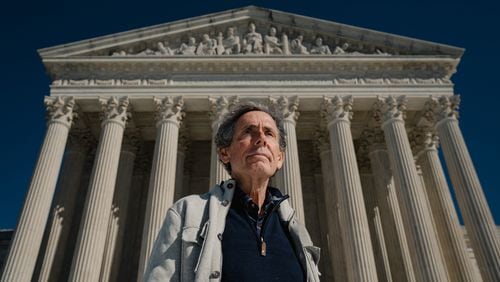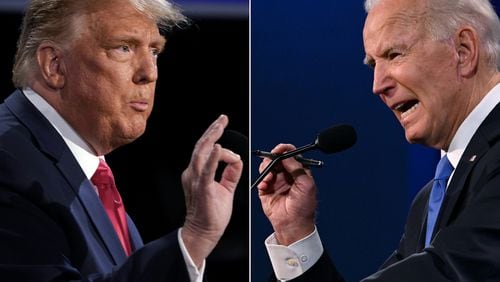The new Supreme Court ruling rejecting how prominent colleges use race in admissions will jolt recruiting and enrollment practices around the country. College and university officials were combing through the opinions and cautioned that it might take days or weeks to analyze what the court majority said and develop a response.
Still, it seems clear that a seismic shift is underway after a series of landmark rulings since 1978 that had allowed colleges to consider race in the interest of assembling a diverse student body. Now, the court is ordering competitive schools to revise how they choose an entering class. That could have significant effects on the demographics of colleges that are in high demand nationally and globally.
What does the ruling say?
In his decision, joined by all six of the court’s conservative members, Chief Justice John G. Roberts Jr. wrote how Harvard University and the University of North Carolina at Chapel Hill consider race when choosing an entering class is at odds with the Constitution’s promise of equal protection. The “student must be treated based on his or her experiences as an individual – not on the basis of race,” he wrote. “Many universities have for too long done just the opposite. And in doing so, they have concluded, wrongly, that the touchstone of an individual’s identity is not challenges bested, skills built, or lessons learned but the color of their skin. Our constitutional history does not tolerate that choice.”
How did colleges use affirmative action in admissions before?
This question was the subject of much debate during the litigation and before. Admissions leaders say they followed limits spelled out in previous Supreme Court rulings, considering race only as one factor among many in the holistic review of an application, using race-neutral methods as much as possible and never setting quotas for how many people they would admit from a given racial group. They also note that the most competitive schools are often overflowing with applicants who have stellar grades and test scores. In that circumstance, they say, the decision to give some candidates a crucial boost for their race or ethnicity does not mean that standards were lowered.
But critics say race-conscious admissions put a too-heavy thumb on the scale to benefit underrepresented groups such as Black and Latino applicants. In this view, admissions is a zero-sum game, and more-deserving candidates who were white or Asian American were too often denied. Merit should count most in a contest with relatively few winners and many losers, these critics say. Defining merit, though, is a major challenge.
Did all colleges consider race in admissions?
No. Nine states, including California and Florida, had already banned race as a factor in admissions to public universities. In addition, a significant number of public and private colleges have previously said they choose not to consider race. Some states have prominent schools with contrasting approaches on affirmative action. For example, the University of Texas at Austin has practiced race-conscious admissions while Texas A&M University has said it does not. The University System of Georgia does not consider race in its admissions process.
Why were these cases brought?
Students for Fair Admissions filed two lawsuits in 2014 to challenge the legality of admissions at Harvard University and the University of North Carolina at Chapel Hill. The plaintiff is a group organized by an opponent of affirmative action named Edward Blum. Among the group’s members are some people who were denied admission to Harvard or UNC. The group had an explicit agenda: to end racial preferences in admissions. It argued that affirmative action violates the Constitution and civil rights law. Lower courts ruled against the plaintiff in both suits, upholding the admissions practices at the two universities. But the Supreme Court had the final word.
How will this change college admissions?
The affects are still unclear. But many of the ways that colleges considered race are now off-limits.
College leaders and admissions officers are poring over the ruling and consulting with attorneys. One prominent higher education attorney, Art Coleman, called the majority opinion “a significant adverse ruling” for colleges that rely on race-conscious admission. David Hinojosa, an attorney with the Lawyers’ Committee for Civil Rights Under Law, who represented students defending UNC’s methods of admission during last fall’s oral arguments, called the ruling “a travesty” but said it “does still leave open the door for race-conscious admissions programs.”
If so, the opening appears to be extremely narrow. Harvard and UNC, like most colleges that take race into account, tracked how applicants identified themselves by race and ethnicity, and they weighed that information as a factor in a holistic review. The Common Application, an online platform that many schools use, has a detailed set of demographic questions for this purpose. But the court ruling cast doubt on whether and how that tracking can continue. The Common App has taken steps to allow the demographic data to be shielded from the application review process if colleges must do so.
The court majority did not bar race entirely as a topic in a student’s application. “Nothing in this opinion should be construed as prohibiting universities from considering an applicant’s discussion of how race affected his or her life, be it through discrimination, inspiration or otherwise,” Roberts wrote. But he added: “A benefit to a student who overcame racial discrimination, for example, must be tied to that student’s courage and determination. Or a benefit to a student whose heritage or culture motivated him or her to assume a leadership role or attain a particular goal must be tied to that student’s unique ability to contribute to the university,” he wrote. “In other words, the student must be treated based on his or her experiences as an individual – not on the basis of race.”
The majority opinion also warned that “universities may not simply establish through application essays or other means the regime we hold unlawful today.”
Separately, the decision appeared to leave the door open for affirmative action at the nation’s military academies. Solicitor General Elizabeth B. Prelogar had told the justices during oral arguments last fall that promoting racial diversity at these institutions – including the U.S. Military Academy at West Point, N.Y., and the U.S. Naval Academy at Annapolis, Md. – was essential for the military as a whole. Roberts responded in his decision that none of those schools were a litigant in this case, “and none of the courts below addressed the propriety of race-based admissions systems in that context. … This opinion also does not address the issue, in light of the potentially distinct interests that military academies may present.”
How much racial diversity is there on college campuses?
The most competitive schools have global brands and are able to pursue diversity on multiple dimensions. About 80 colleges and universities in 2021 admitted 25% or fewer of their undergraduate applicants, federal data show, a group that includes Amherst College, the University of Michigan and Wake Forest University.
Within that group, according to the data, about 6% of undergraduates in 2021 were Black or African American, 6% multiracial, 13% Hispanic, 19% Asian American and 41% white. Another 12% were international students of various racial backgrounds.
Excluding the international students, the breakdown was 6% multiracial, 7% Black or African American, 14% Hispanic, 22% Asian American and 46% white. The Black and Hispanic shares tend to be larger, and the Asian American shares smaller, at less-selective colleges, according to a recent analysis from the Chronicle of Higher Education.
Are there ways to obtain diversity without considering race?
Yes. Schools can emphasize recruiting from a variety of neighborhoods, cities or regions. They can seek students from a broad spectrum of family income levels. They can expand financial aid. They can pay special attention to “first-generation” applicants whose parents did not graduate from college.
Such techniques are crucial for recruiting disadvantaged students. But there is much dispute about how effective they are in narrowing racial enrollment gaps. Simply put, geographic and socioeconomic diversity do not guarantee racial and ethnic diversity. Experts fear that Black and Latino shares of students will fall significantly if prestigious universities are not allowed to take race into account.
About the Author






